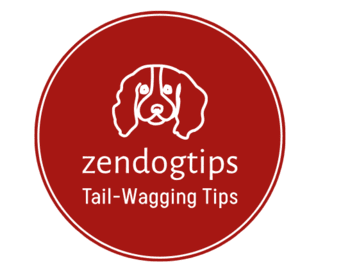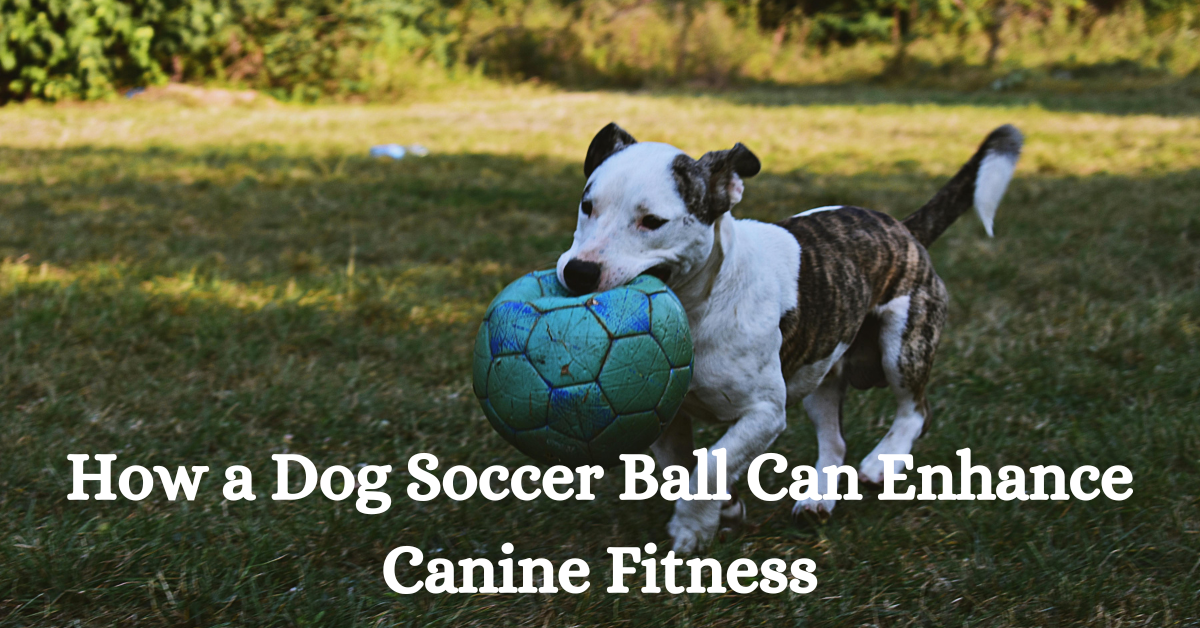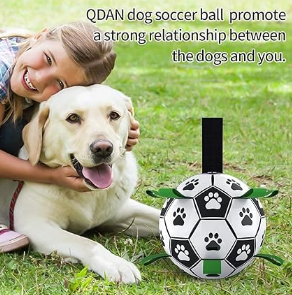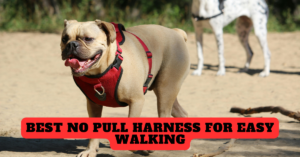Exploring the Concept of Canine Fitness through Interactive Play:
In the pursuit of enhancing our furry companions’ physical health and mental well-being, the introduction of dog soccer balls as a fitness tool has gained momentum in recent years. This innovative approach not only provides dogs with a fun and engaging way to exercise but also promotes cognitive stimulation and social interaction. By incorporating soccer ball play into their routine, pet owners can witness significant improvements in their dogs’ agility, coordination, and overall fitness levels. This article delves into the myriad benefits of using a dog soccer ball for canine fitness, offering insights on selecting the right equipment, training techniques, and fostering a deeper bond with our beloved pets through interactive play.
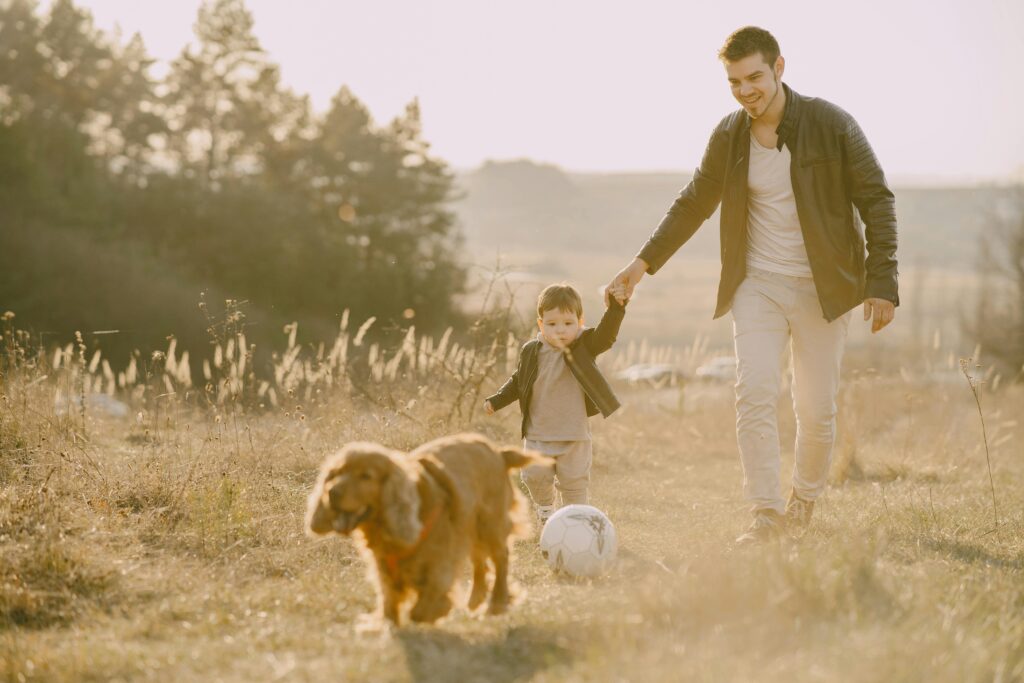
Introduction to Dog Soccer Balls:
Exploring the Concept of Canine Fitness through Interactive Play
When it comes to keeping our furry friends fit and entertained, dog soccer balls have emerged as a popular interactive toy. These specially designed balls cater to a dog’s natural instincts while promoting physical activity and mental stimulation. Let’s dive into how these toys can enhance your canine companion’s well-being.
Benefits of Using a Dog Soccer Ball for Canine Fitness:
Promoting Physical Exercise and Mental Stimulation
Dogs thrive on playtime, and a soccer ball designed for them can be a game-changer. By engaging in a friendly game of soccer with your pup, you not only boost their physical fitness but also provide mental stimulation. It’s a win-win for both health and happiness!
Improving Coordination and Agility in Dogs:
Just like humans, dogs benefit from activities that improve coordination and agility. With a dog soccer ball, your furry friend can work on their reflexes, balance, and spatial awareness, leading to improved overall agility. Plus, chasing after a moving ball is a great way to keep those reflexes sharp!
Choosing the Right Dog Soccer Ball for Your Pet:
Considerations for Size, Material, and Durability
When selecting a dog soccer ball, it’s essential to consider factors like size, material, and durability. Choose a size that is suitable for your dog’s breed and chewing habits. Consider durable materials that can withstand your pup’s play style to ensure longevity.
Exploring Different Types of Dog Soccer Balls Available in the Market:
From squeaky soccer balls to treat-dispensing ones, the market offers a variety of options to cater to different play preferences. Explore the range of dog soccer balls available and choose one that aligns with your dog’s interests and energy levels for maximum enjoyment.
Below with review one of the most popular dog soccer ball that your dog will love.
Dog Soccer Ball with Grab Tabs Review:
If you’re looking for a durable and fun toy for your dog, the Dog Soccer Ball with Grab Tags is a great option. This ball is made of high-quality materials that can withstand even the most aggressive chewers, and it comes with grab tags that your dog can use to keep the ball from flying away.
The ball is also ultra-bouncy, so your dog will have a blast chasing it around the yard or playing fetch. Plus, it comes with a pump and needle adapter, so you can easily inflate it to the perfect size for your dog.
Here are some of the pros and cons of the Dog Soccer Ball with Grab Tags:
Pros:
Durable and made of high-quality materials
Ultra-bouncy
Comes with grab tags
Includes a pump and needle adapter
Cons:
The ball may be too small for some dogs
The grab tags may be a choking hazard for small dogs
The ball may not be suitable for playing in water
Overall:
The Dog Soccer Ball with Grab Tags is a great toy for dogs of all sizes. It’s durable, fun to play with, and comes with a variety of features that will make your dog happy. I highly recommend it!
Training Techniques and Exercises with a Dog Soccer Ball:
Basic Training Commands for Soccer Ball Play
Introducing basic commands like “fetch,” “drop it,” and “go get it” can enhance your dog’s soccer ball play experience. Training your pup to respond to these commands not only adds an element of control to the game but also strengthens your bond through positive reinforcement.
Variety of Exercises to Engage Your Dog’s Muscles and Mind
Incorporate a mix of exercises, such as dribbling, passing, and shooting, to engage your dog’s muscles and mind during soccer ball play. These activities not only provide physical exercise but also challenge your pup mentally, keeping them sharp and entertained.
With a dog soccer ball in tow, you can kickstart a fun and fitness-focused routine for your canine companion, making this a year of health and happiness for both you and your furry friend!
Incorporating Playtime and Bonding with Your Dog Through Soccer:
Creative Ways to Make Soccer Ball Play a Fun and Bonding Experience
Want to score major bonding points with your pooch? Incorporate some soccer action into your playtime routine! Make it fun by setting up mini “goalposts” using household items and celebrate each goal like it’s the World Cup final. Your dog will love the interactive play and the quality time spent with you.
The Role of Positive Reinforcement in Strengthening the Human-Canine Relationship
Using positive reinforcement techniques like treats and praise during soccer ball play can do wonders for your bond. Rewarding good behavior helps your dog associate the game with positive experiences and strengthens your connection. Plus, who doesn’t love a little treat for a job well done?
Monitoring Your Dog’s Fitness Progress with Soccer Ball Activities:
Tracking Physical Changes and Behavioral Improvements
Keep an eye on how your dog’s fitness level progresses with soccer ball activities. Notice any changes in their stamina, agility, and overall demeanor. A happy and active pup is a healthy pup!
Adjusting Exercise Intensity and Duration Based on Your Dog’s Response
Every dog is different, so it’s important to tailor their exercise routine to fit their needs. Pay attention to how your dog responds during play – if they’re panting heavily or seem fatigued, it might be time to dial back the intensity or shorten the duration of the game.
Potential Challenges and Solutions in Using a Dog Soccer Ball:
Addressing Behavioral Issues or Lack of Interest in Soccer Ball Play
If your dog seems uninterested in soccer ball play or exhibits behavioral issues during the game, don’t fret. It could take some time for them to warm up to the activity. Try using different toys or treats to pique their interest, and always make sure the game is a positive experience for them.
Dealing with Safety Concerns and Preventing Injuries During Playtime
Safety first, always! Keep an eye out for any potential hazards during soccer ball play, such as sharp objects or slippery surfaces. Make sure the playing area is secure and free of obstacles to prevent any accidents. And remember, a little bump or scratch is all part of the game – just like a soccer player getting a few bruises on the field!
Final Thoughts:
Help your furry friend stay in top shape and have a ball while doing it with a dog soccer ball. By incorporating playtime, positive reinforcement, and monitoring their progress, you can enhance your bond and keep your pup fit and happy. So, lace up those imaginary cleats and get ready for some tail-wagging fun on the “field”!
As we reflect on the transformative impact of integrating dog soccer balls into our pets’ fitness regimen, it becomes evident that the benefits extend far beyond physical exercise. The joy, companionship, and shared moments of play we experience with our dogs not only strengthen the bond between human and canine but also contribute to a healthier and happier life for our beloved furry friends. With the right guidance, training, and a touch of creativity, the simple act of kicking a soccer ball can unlock a world of possibilities for enhancing our dogs’ well-being.
